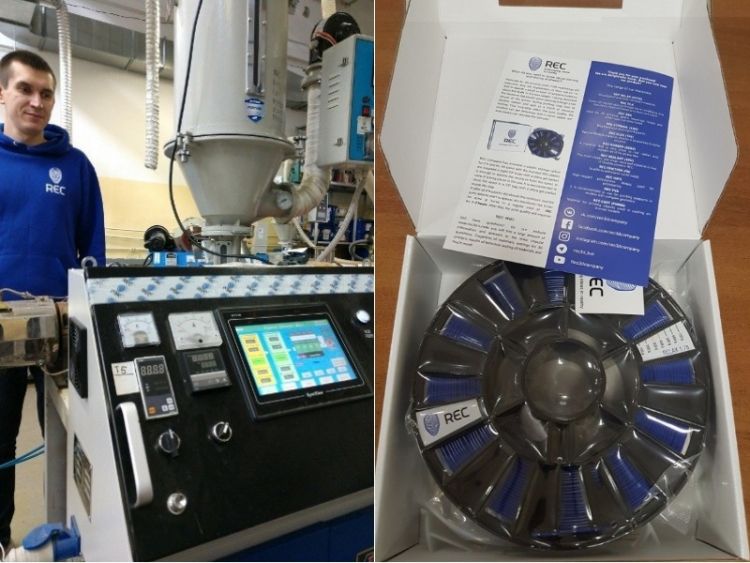From pellets to bobbins: an excursion to 3D printing plastic production site

Is domestically produced plastic good enough for 3D printing? To answer this question, let’s visit REC factory, one of the Russian manufacturers. The factory is located at Kalibr Tech Park near Alexeyevskaya metro station in Moscow. It produces more than 20 types of materials, eleven of which go for sale and nine are customized specially for industrial enterprises.

Expandable materials for 3D printers are produced using the extrusion technique: melted raw materials are squeezed through nozzles and harden. Every type of plastic requires its own temperature and pressure.
REC has automated manufacturing: just five people service the area of 150 square meters. The start point is a control panel of the extrusion line used to set up extrusion parameters. Every polymer has its own process chart with the required temperature and speed.
The factory uses powerful throttle valves for air extraction: they are responsible for the removal of smells and volatile matters. Six throttle valves are installed above every extruder head and every large reel. They intake air and send it through filters. Therefore, there is almost no peculiar smell in the factory. However, extruders, ventilation units, and convectors generate lots of noise.
REC uses three extrusion lines to produce plastic, which further goes to the packing department, and afterwards – to the finished-products storage area.

The plastic feedstock are pellets supplied in 25 kg sacks or 750 kg octabins – cardboard boxes. Plastic pellets are refined from rubbish, mixed with color pellets and different additive agents, and later sent to drying bins: before starting the extrusion process, it is important to get rid of damp.
The dryout time and temperature depend on the polymer type. For instance, ABS dries within 3 hours at 70 ºС, and polycarbonate – 3.5 hours at 120 ºС. Pellets are always dried at night to prepare the material to the workday.

In the morning, automatic feeders supply pellets from drying bins to extruders. Walls of extruders are heated to a specific temperature to melt pellets. At the output, the extruder head forms a regularly shaped strand (filament). To satisfy quality standards, it must be ideally smooth. The filament is chilled in water tanks and later sent to the control unit to check the diameter. It is measured using laser and defective areas are marked. Upon rewinding on bobbins, these parts of the plastic filament are removed and the obtained small bobbins are used for 3D pens.

At first, the strand is wound on a big reel and later rewound on smaller bobbins that weigh 1, 2, 5, or 10 kg. Bobbins are placed in the drying cupboard and later sent to the vacuum packaging line. The speed of the 3D printing plastic production depends on the type of plastic. On average, 6-7 kg of plastic is produced per hour.

REC is a modern automated manufacturing site and produces plastics that meets all standards. To learn more about products of the company, attend its booth at the 3D Print Expo, where REC will present all types of produced materials. Besides, you will see modern 3D printers and amazing art objects created with their help at the exhibition and attend lectures and workshops on 3D printing.







